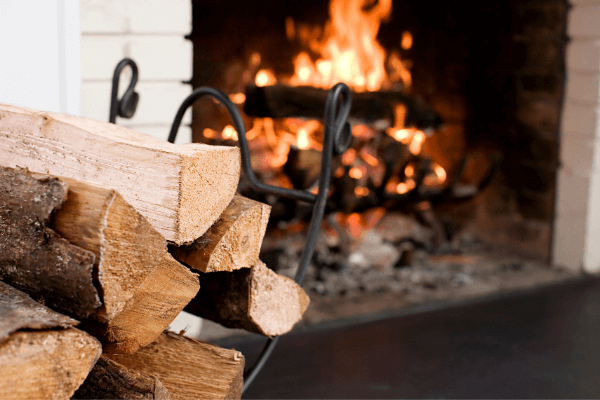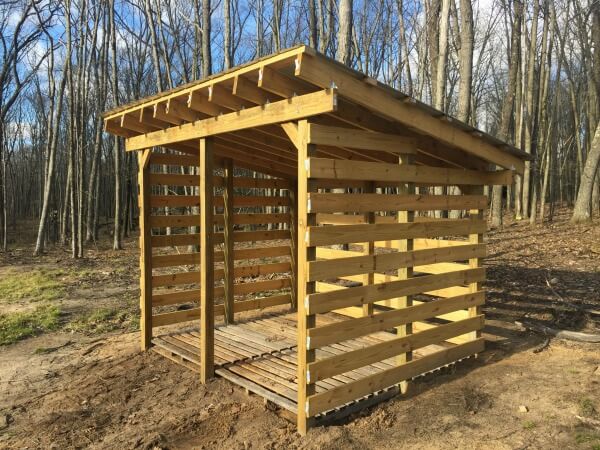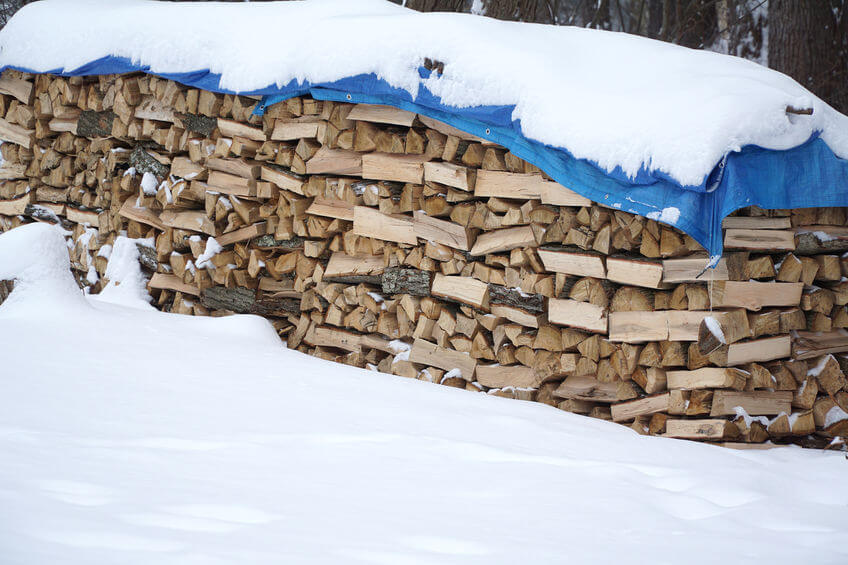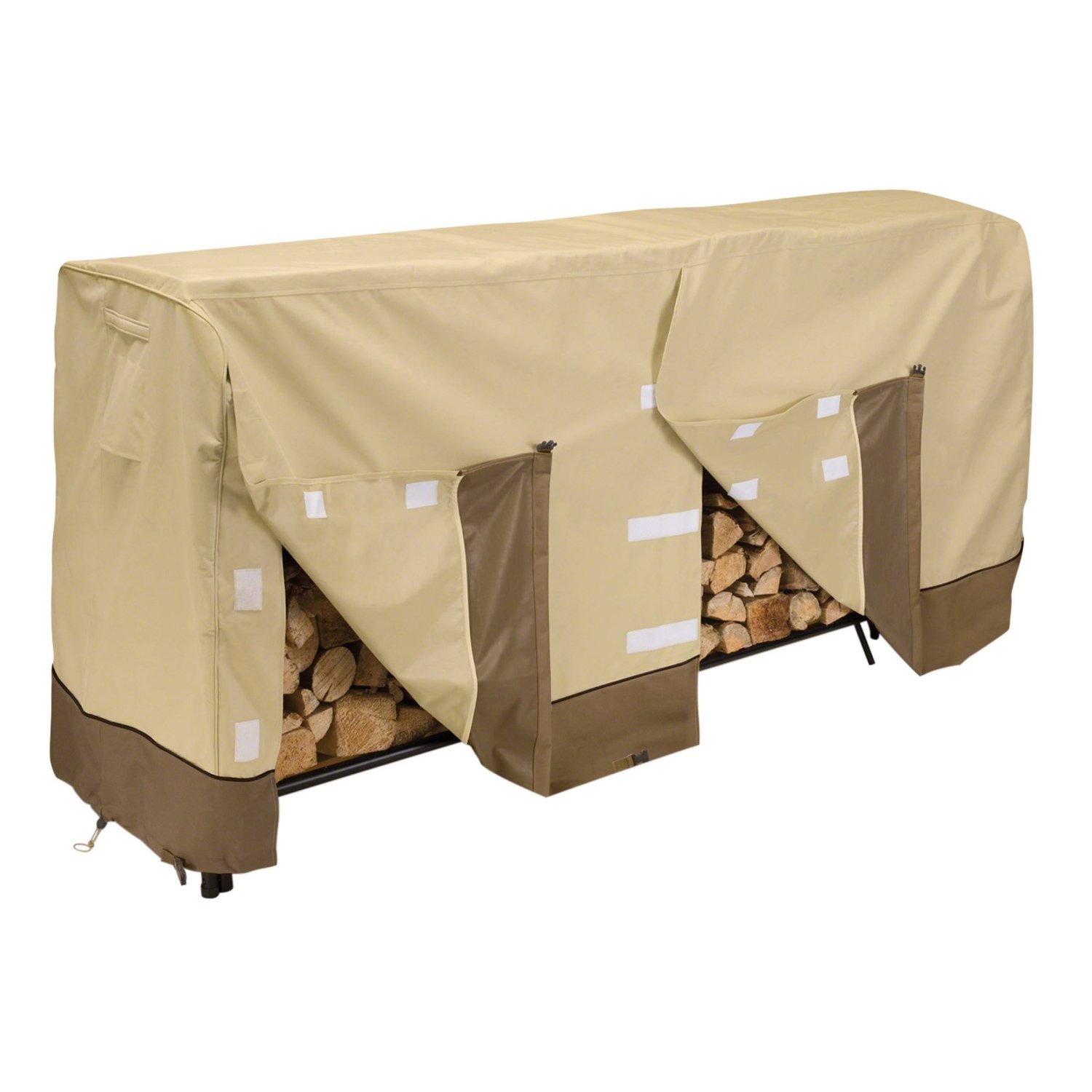- Home
- Storing Firewood
- Firewood Cover
Firewood Cover
This post may contain affiliate links so I earn a commission.
Using a firewood cover will keep your stack of firewood dry and ready to burn.
Why is using a cover so important?
Firewood that has been stacked and left exposed to the weather is prone to becoming damp and difficult to light.
Rain and melting snow that hits the top of your firewood stack will quickly cause the top couple of rows of your wood to become wet.
When you grab wood off of a woodpile where do you grab it? You guessed it.....right off the top.
No one wants to dig down through the top couple of rows of wet firewood to find a dry piece!
It's very frustrating to grab some firewood off of your stack and find out it's too wet to burn effectively or safely.
This is especially true if you're trying to start a fire with wet wood.

When starting a fire in a wood stove or fireplace, it's important to build a quick, hot fire and stay away from a smoldering fire that just won't start because the wood is too wet.
Hot fires serve a couple of key benefits.
First, it will quickly heat up the inside of your chimney which reduces the chances of creosote sticking to the sides.
Second, a hot fire burns up a majority of the gasses produced during the combustion of the wood, reducing the total amount of unburned gasses rising through your chimney, potentially turning into creosote.
This is why properly drying firewood is important.
Damp or wet firewood uses the BTU's generated by the fire to help evaporate the water from the wood.
The sizzling noise you hear when you burn a wet log is the sound of BTUs being wasted.
Building A Firewood Shed - Firewood Cover
A dedicated firewood shed with a roof is my favorite way to cover firewood.
Although they can be a little labor intensive to build, they last for years and they do a great job at keeping your firewood dry.
When building a firewood shed, remember to install slatted sides that allow air to flow through the shed.
This will help the warm summer breeze dry out the wood.

Don't forget about ground moisture too.
By elevating the wood off the ground it prevents the wood from soaking up ground moisture and also allows the wind to flow under the wood, drying it out even faster.
Stacking the wood on pallets works great. They're easy to install and they make a great floor for your firewood shed.
For a roof I recommend using a steel roof.
You can install a steel roof pretty quick and you'll never have to worry about replacing it.
A firewood shed will keep all sides of your firewood dry, while still allowing it to properly season.
Using A Tarp Or Commercial Firewood Cover
If you do not have access to a firewood shed or firewood crib, a firewood cover is your next best option.
It allows you to keep your firewood dry without having to store it inside, potentially bringing insects into your home.
Storing or seasoning firewood inside is never a good idea.
It not only increases the odds of having a mice, ants or spiders living inside your house, but it also increases the odds of having moldy firewood.
It's not uncommon to store wet firewood in a basement only to find it develops mold, which you definitely don't want inside your house.
So, to avoid all these issues, just stack your firewood outside and don't bring it in until you're ready to burn it.

One common, inexpensive way to cover your firewood stack is with a blue tarp.
Almost every household has a standard blue tarp laying around.
Once the wood is stacked, take the tarp and place it over the top of the firewood.
Do not cover the entire stack!
Leave the sides and ends uncovered to allow air to flow through your stack of firewood.
Completely covering the firewood will prevent moisture from escaping, creating an environment where mold can thrive.
Once the tarp is placed evenly over the top, tie it down by using some rope or string tied to stakes.
This will prevent the tarp from blowing in the wind which will quickly shred the tarp.
Bungee cords also work really well for keeping the tarp in place.
Plus when you grab wood from the pile you don't have to untie the rope, you can just unhook the bungee cord.
Areas that receive deep snow can also benefit from a cover.
The cover protects the dry wood and eliminates the need to clean off the snow before using it.
Another option is to buy a commercially made firewood cover specifically designed to cover a stack of wood.

These firewood covers are designed to cover the top and sides of the stack and have ventilation holes on the ends to allow airflow.
Many come with an access panel on the front that closes with velcro allowing you to seal off the stack.
Most covers are made from a thick, durable material that are designed to last for many years.
These covers are designed to keep seasoned firewood dry and are not designed to cover green, wet firewood.
You should allow your green firewood to season before placing it under one of the enclosed covers to allow it to properly dry.
If you purchase your firewood from a local supplier, the wood should be seasoned already.
This dry wood can be used immediately with a commercial cover, if it's a reputable dealer and the wood has been allowed to properly season.
Overall - Firewood Cover
No matter which option you choose, it's important to somehow cover your firewood to protect it from the weather.
Depending on your budget, use a method that works well for you and keeps your firewood dry in the process.

About the Author
Obsessed with firewood, Nick is behind over 350+ of Firewood For Life's articles, as well as countless reviews, guides and YouTube videos to help readers like you reduce heating costs and create the perfect fire.


